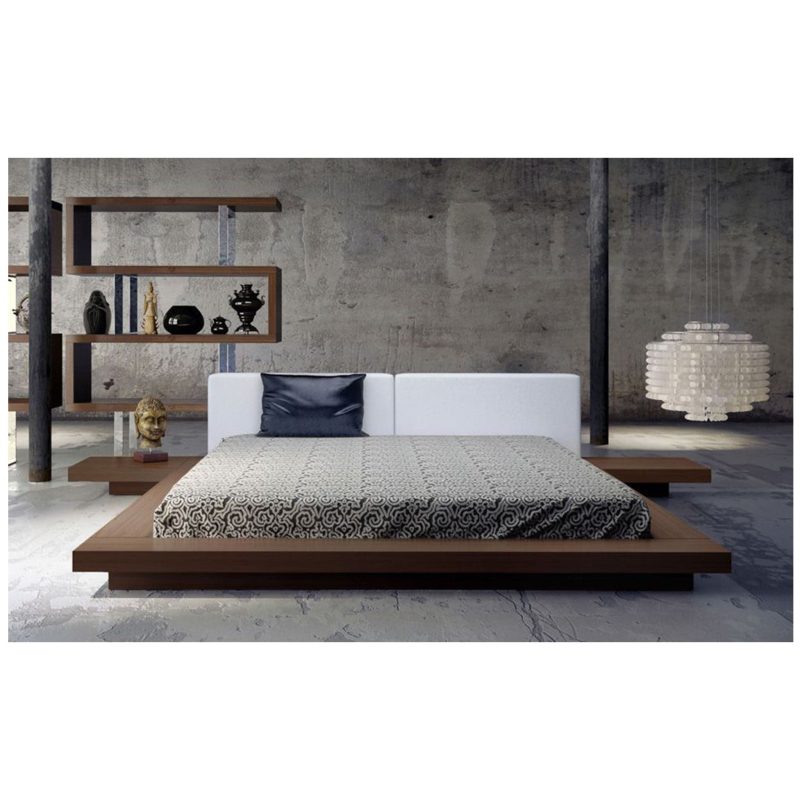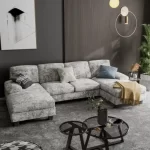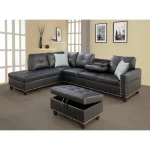Introduction: The Evolution of Sleep Foundations
In 2024 the quest for a comfortable and supportive sleeping environment has been an ongoing pursuit throughout human history. With the advent of modern bedding systems, the traditional box spring has long been a staple component in providing a stable base for mattresses. However, in recent years, platform bed have emerged as a popular alternative, challenging the dominance of box springs. This article explores the numerous perks of platform beds and examines whether a box spring is still a necessity in today’s sleep landscape.
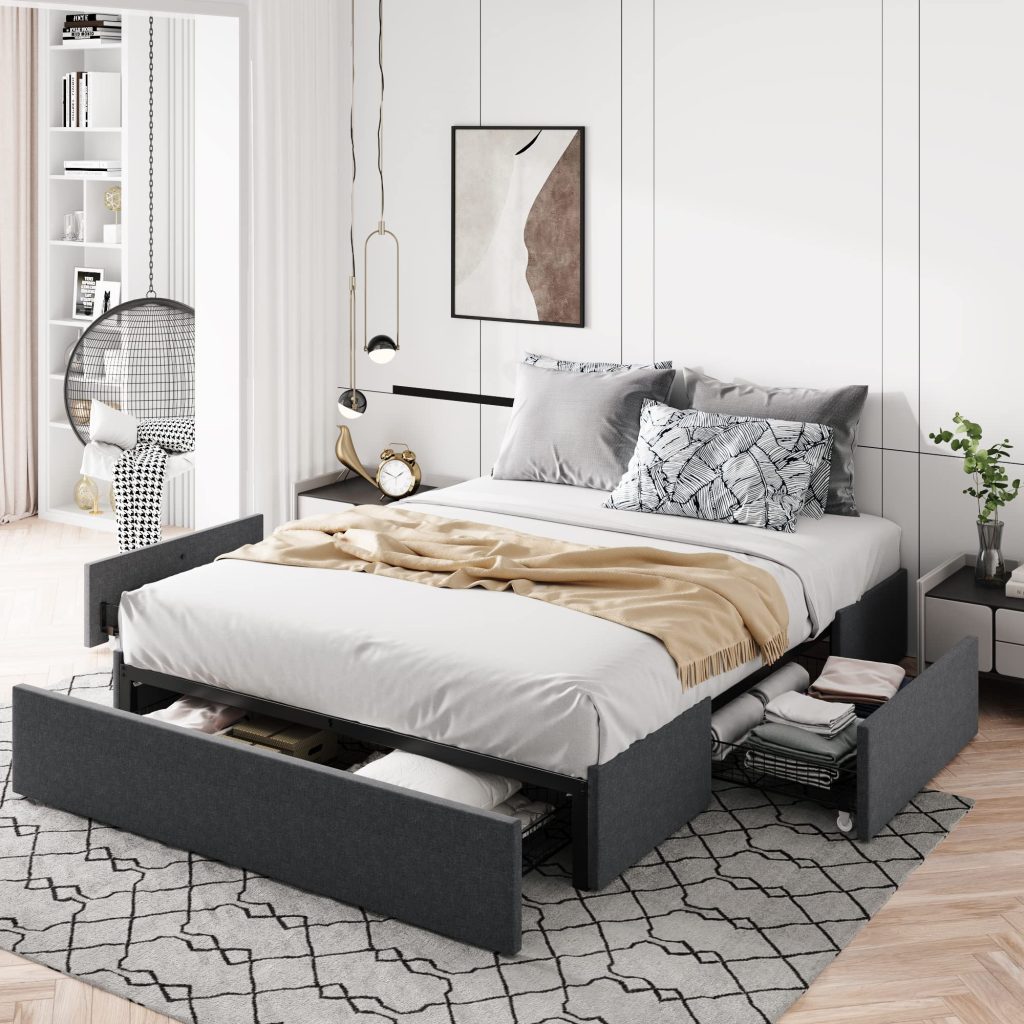
Understanding the Role of Box Springs
A. Historical Context and Purpose
Box springs were initially introduced in the late 19th century to provide additional height and suspension for mattresses, which were then made from materials like horsehair, cotton, or wool. These early mattresses benefited from the box spring’s coil system that absorbed shock and distributed weight evenly, prolonging mattress lifespan and enhancing comfort.
B. Contemporary Functionality
Today, box springs serve primarily as a supportive base for modern mattresses, elevating them to a convenient height for getting in and out of bed. They also promote air circulation beneath the mattress, helping to maintain a fresh and hygienic sleeping environment. Despite these benefits, advancements in mattress technology and the rise of platform beds have led many to question whether a box spring remains essential.
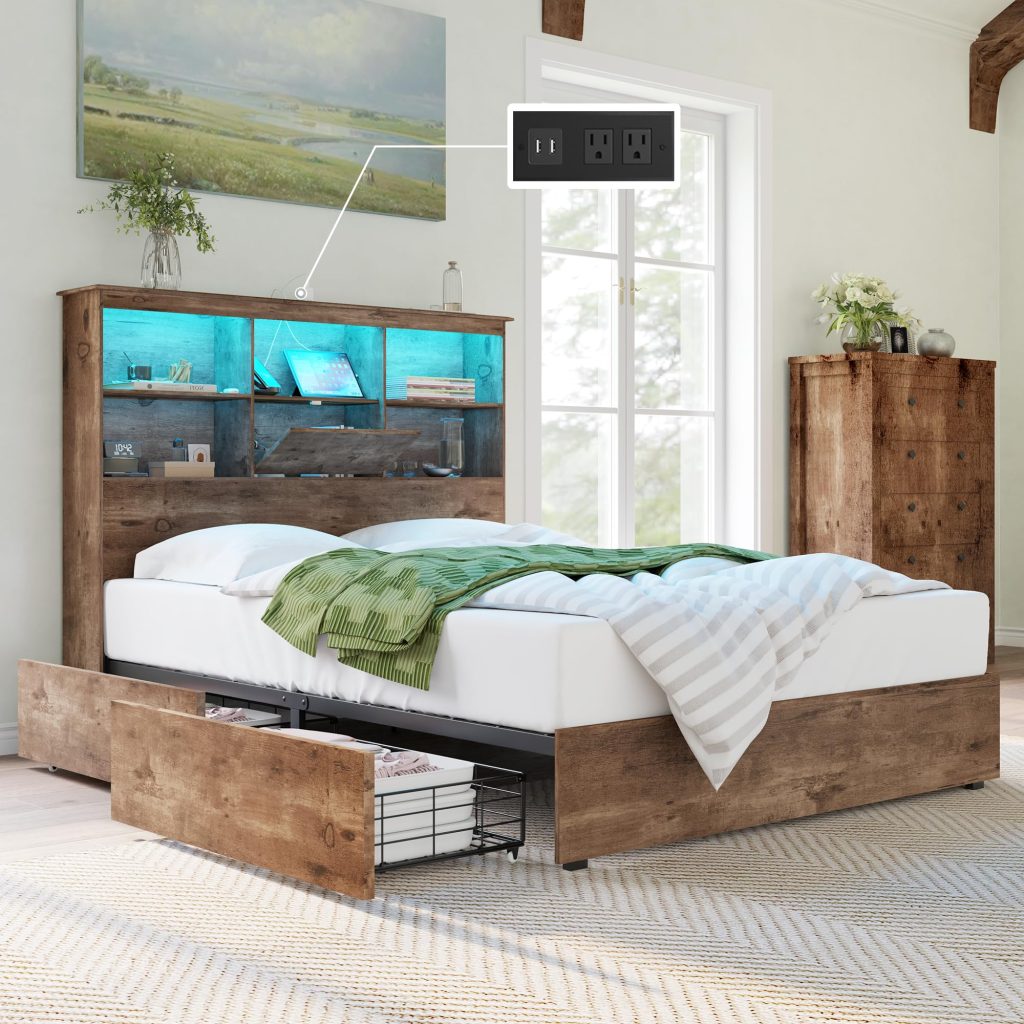
The Rise of Platform Beds: A Modern Alternative
A. Definition and Design
Platform beds are designed with a solid, flat surface that eliminates the need for a box spring. They typically feature a sturdy wooden or metal frame with slats or a solid panel to support the mattress directly. This minimalist design offers a sleek, contemporary aesthetic while providing a stable foundation for various mattress types.
B. Advantages Over Box Springs
- Cost-effectiveness: Platform beds often cost less than purchasing both a bed frame and a box spring, making them an attractive option for budget-conscious consumers.
- Space-saving: Without the added height of a box spring, platform beds can be a practical choice for small bedrooms or rooms with low ceilings.
- Enhanced Durability: Constructed from robust materials, platform beds tend to be more durable and require less maintenance than box springs, which may sag or wear over time.
- Versatility in Style: Available in a wide range of designs, colors, and materials, platform beds can easily complement any bedroom decor, from minimalist to opulent.

Assessing Mattress Compatibility
A. Memory Foam and Latex Mattresses
These types of mattresses, known for their body-contouring properties and pressure relief, typically do not require a box spring. Their dense composition allows them to perform optimally on the firm, even surface provided by a platform bed, ensuring proper support and durability.
B. Hybrid and Innerspring Mattresses
While traditionally paired with box springs, hybrid and innerspring mattresses can also be used with platform beds. Most modern platform beds feature closely spaced slats or a solid panel that provide adequate support for these spring-based mattress types, negating the need for a box spring.
C. Airbeds and Adjustable Beds
Airbeds and adjustable beds, which offer customizable firmness levels and positional adjustments, often come with their own specialized frames or bases. In these cases, a platform bed or box spring is usually unnecessary, as the dedicated support system is already integrated into the mattress design.
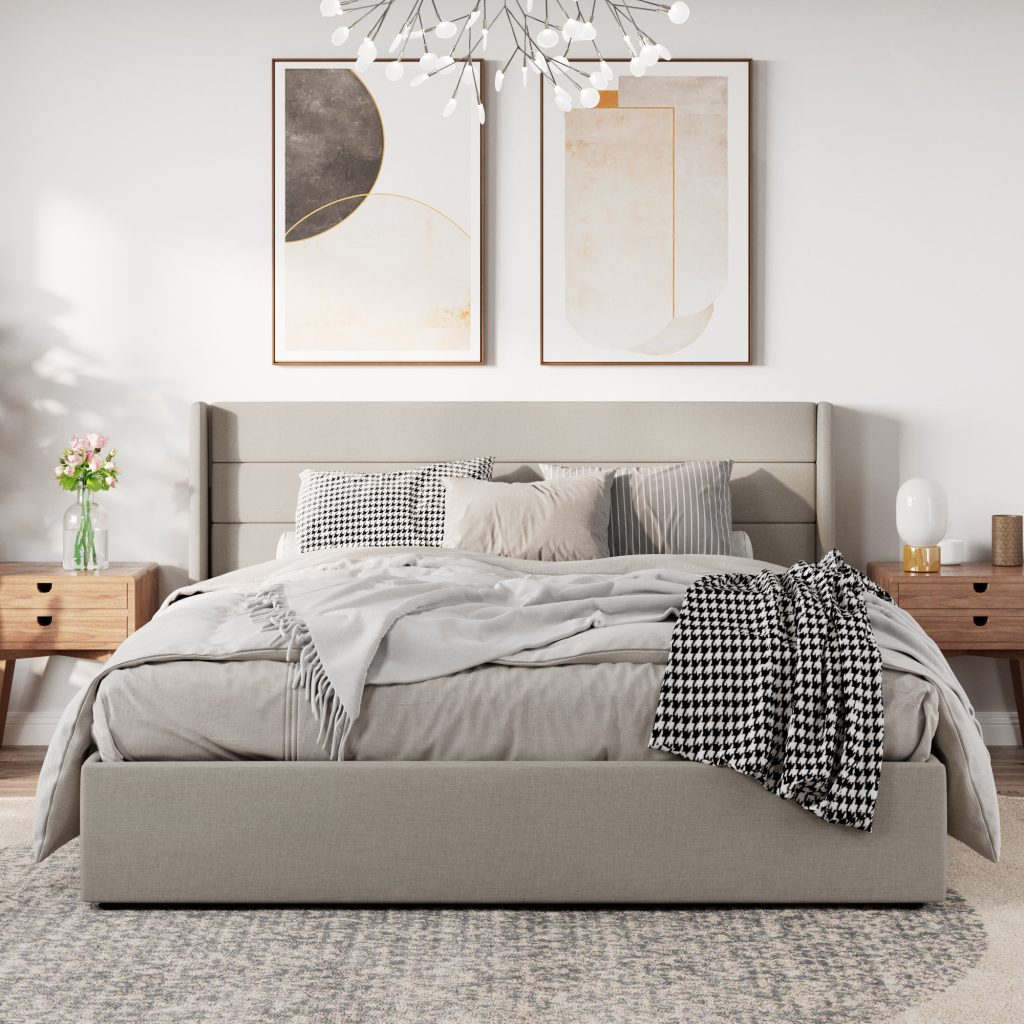
Environmental Considerations – do platform beds need a box spring
A. Sustainable Materials and Manufacturing Processes
Many platform beds are constructed using eco-friendly materials like reclaimed wood or bamboo, and some manufacturers employ sustainable production methods. By eliminating the need for a box spring, platform beds can contribute to a reduced environmental footprint, as they require fewer resources and generate less waste.
B. Longevity and Disposal
Platform beds generally last longer than box springs due to their sturdier construction. When it comes time to replace a platform bed, its components may be more easily recyclable or repurposed compared to a worn-out box spring, further minimizing environmental impact.
Personal Comfort and Preferences
Ultimately, the decision between a platform bed and a box spring should be guided by individual comfort preferences and specific needs. Factors such as desired bed height, bedroom aesthetics, budget, and mattress type should all be taken into account when selecting the most suitable sleep foundation.
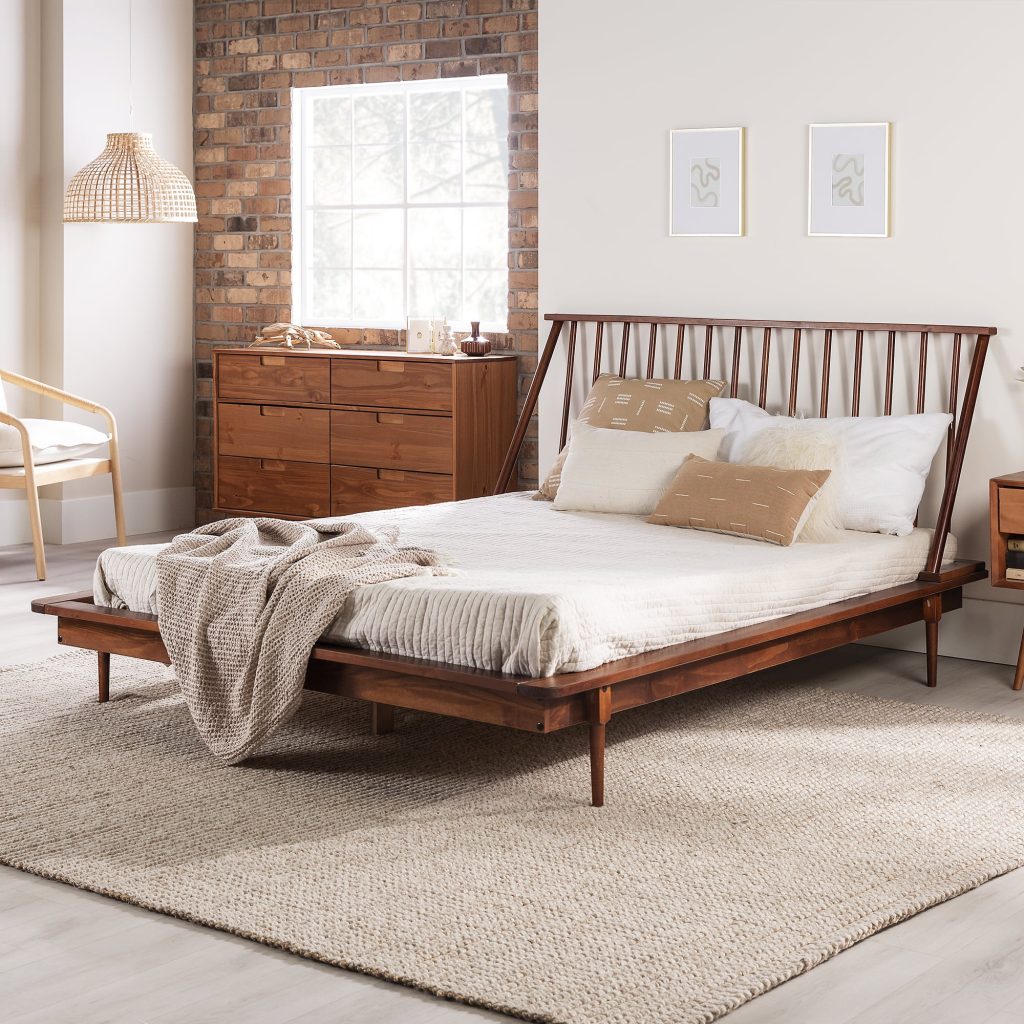
Platform Bed Basics
A platform bed is a type of bed frame that includes a built-in support system, typically consisting of a series of slats or a solid panel, designed to support a mattress directly without the need for a box spring.
The Role of a Box Spring
Traditionally, box springs served several purposes. Firstly, they acted as a shock absorber, increasing the lifespan of the mattress by distributing body weight evenly. They also elevated the mattress to a comfortable height, making getting in and out of bed easier, especially for taller mattresses like pillow tops. Additionally, older mattresses required box springs to provide the necessary support due to their construction.
Do You Need a Box Spring with a Platform Bed?
The slatted or solid base serves as the foundation, negating the need for additional support. Here are a few reasons why:
- Built-In Support: The slat system or solid panel offers sufficient support for most modern mattresses, which are often designed to work directly on a flat, hard surface.
- Cost Savings: Eliminating the need for a box spring reduces the overall cost of your bedding setup.
- Low Profile Look: Platform beds often have a lower profile, which some people prefer for aesthetic reasons or to make a room appear larger.
- Space Efficiency: Without a box spring, you gain extra vertical space in your bedroom, which can be beneficial in smaller rooms or to accommodate taller individuals.
Exceptions and Considerations
- Mattress Warranty: Some high-end mattresses may require a box spring to maintain the warranty. Check your mattress warranty policy to ensure compliance.
- Height Preference: If you prefer a higher sleeping surface, adding a box spring can raise the bed to a more comfortable height.
Factors to Consider When Choosing Between Platform Beds and Box Springs
A. Bedroom Layout and Space Constraints For those with limited bedroom space or unconventional layouts. The compact profile of platform beds can prove highly advantageous. Their streamlined design allows them to fit seamlessly into tight corners, alcoves, or under eaves, maximizing usable floor area. In contrast, box springs, when combined with a bed frame. May consume valuable space and create visual clutter, particularly in smaller rooms.
B. Bed Height and Accessibility Bed height is another crucial factor to consider, especially for individuals with mobility issues or those who prefer a lower or higher sleep surface. Platform beds generally sit lower to the ground, which can be beneficial for ease of access. Particularly for children, older adults, or people with disabilities. Conversely, box springs, when used in conjunction with a bed frame, can elevate the mattress to a more conventional height. Potentially reducing strain on the back when getting in and out of bed.
C. Noise and Motion Transfer Platform beds, with their solid construction and direct mattress support, tend to minimize noise and motion transfer between sleep partners. This characteristic can be particularly appealing for light sleepers or couples with different sleep schedules. Although modern box springs have improved in this aspect, they may still produce轻微 creaking or movement, which could disrupt sleep quality for some users.
Conclusion: Embracing Platform Beds and Reevaluating the Need for Box Springs
In light of the numerous perks offered by platform beds – cost-effectiveness, space-saving design, enhanced durability, style versatility, compatibility with various mattress types, and environmental sustainability – it is clear that a box spring is no longer a strict requirement for a comfortable and supportive sleep environment. As mattress technology continues to evolve and consumer preferences shift toward streamlined, functional solutions, platform beds have emerged as a compelling alternative to the traditional box spring setup. By carefully considering personal needs and preferences, individuals can confidently choose a sleep foundation that best suits their lifestyle without feeling beholden to the once ubiquitous box spring.
Platform beds offer a range of benefits, from their modern aesthetic to their space-saving design and cost-effectiveness. Unless your mattress warranty specifies otherwise or you have a specific preference for height, a box spring is generally unnecessary with a platform bed. Embrace the simplicity and elegance of a platform bed, knowing it is designed to provide all the support your mattress needs for a comfortable and restful night’s sleep.
